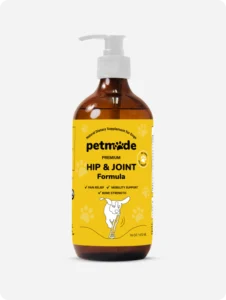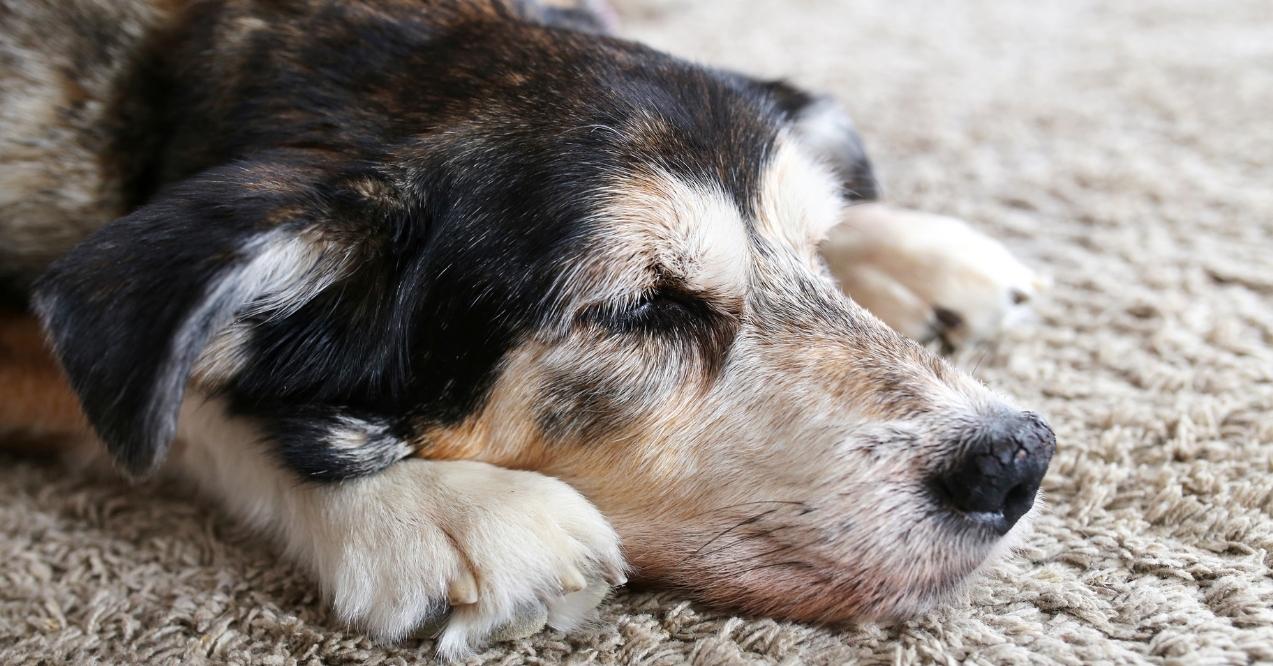How to Strengthen Old Dog’s Hind Legs
Wondering how to strengthen old dog’s hind legs? As our furry companions age, it’s common to notice a decline in their mobility, especially in their back legs.
Senior dogs often experience muscle weakness, which can make simple activities like walking or standing more challenging. But don’t worry, there are gentle ways to support your dog’s mobility and help them regain strength.
In this blog, we’ll explore the causes of hind leg weakness in older dogs and provide practical tips and exercises to strengthen those muscles, so your dog can stay active and happy in their golden years.
What Causes Sudden Hind Leg Weakness in Dogs?
Understanding what causes sudden hind leg weakness in dogs is essential for helping your senior pet stay active and comfortable. As dogs age, they naturally experience muscle loss, which can lead to weaker hind legs.
Additionally, nerve deterioration may affect how well your dog controls their movements, contributing to weakness. Weight gain is another factor; excess pounds put extra strain on their joints and muscles, making it harder for them to move easily.
Environmental factors also play a role in senior dog weak hind legs. Slippery floors can cause slips and falls, further weakening muscles and joints. Limited exercise can lead to decreased muscle tone, while inconsistent activity may prevent muscle strengthening. Therefore, monitoring your dog’s behavior for early signs of weakness, such as difficulty standing or reluctance to walk, can help you address issues promptly.
Gentle Exercises to Strengthen Your Dog’s Legs

How to strengthen old dog’s hind legs? Keeping your senior dog active is essential to prevent further muscle loss in their hind legs. Regular movement supports joint health and helps maintain muscle mass.
Low-Impact Activities
Low-impact exercises are ideal because they improve strength without putting extra strain on aging joints. Short walks are a great way to get your dog moving without overdoing it. These brief, daily outings help improve muscle tone and increase blood flow to your dog’s legs.
Swimming is another excellent low-impact activity that lets your dog work their muscles without putting stress on their joints. Both options promote gentle mobility, making them ideal for older dogs.
Easy At-Home Exercises for Your Dog
You can also incorporate canine physiotherapy exercises at home. Try walking your dog uphill or create a small obstacle course indoors to keep them engaged and moving. These activities help prevent muscle loss in dogs hind legs while keeping exercise fun. Offering rewards like treats or toys can make these exercises even more enjoyable for your dog!
Strengthening Techniques to Rebuild Muscle
When basic exercises aren’t enough to tackle the weakness in back legs of older dogs, it’s time to explore specialized strengthening techniques. These methods focus on rebuilding muscle mass and enhancing strength, often using specific equipment or targeted movements.
Resistance Training for Stronger Legs
Light resistance exercises can make a big difference in your dog’s muscle strength. Gentle uphill walking adds natural resistance, encouraging your dog’s hind legs to work a bit harder. Using resistance bands designed for dogs can also be effective. Attach the bands loosely to your dog’s hind legs and guide them through slow movements. Remember to keep sessions short and controlled to avoid overexertion.
Hydrotherapy
Hydrotherapy is a fantastic way to strengthen muscles without stressing the joints. Underwater treadmills or swimming in shallow water provide natural resistance as your dog moves against the water. The buoyancy reduces impact on their joints while the water’s resistance helps build muscle.
Fun with Therapy Balls and Balance Boards
Introducing therapy balls and balance boards may boost muscle strength and improve balance. Start by placing a balance board on a non-slip surface. Encourage your dog to place their front paws on it while keeping their hind legs on the ground. This engages their hind leg muscles as they work to maintain balance. Gradually increase the challenge by having them stand with all four paws on the board or using a therapy ball for added fun.
Diet and Comfort

Maintaining your senior dog’s muscle strength and joint health is about more than just exercise – it also requires the right nutrition and a comfortable environment. A balanced diet, combined with thoughtful strategies to keep your dog cozy, can significantly impact their quality of life as they age. For older dogs, especially those with dogs hind legs weak, making these adjustments can help them feel stronger and more mobile.
Nutrient-Packed Foods for Muscle Support
A diet rich in lean proteins, omega-3 fatty acids, and joint-supporting nutrients like glucosamine is key to maintaining muscle mass and supporting joint flexibility. High-protein dog food, along with foods fortified with fish oil, can help promote long-term muscle strength. These nutrient-packed foods are essential for older dogs, providing the building blocks their bodies need to stay active and comfortable as they age.
Using Supplements to Support Mobility
Supplements like glucosamine, chondroitin, and fish oil are excellent for supporting joint health and reducing muscle loss in older dogs. These supplements work by promoting joint lubrication and flexibility, making it easier for your dog to move comfortably. Incorporating these into your dog’s daily routine, whether through nutrient-rich treats or mixed into meals, can help support their overall mobility and well-being.
Creating a Cozy, Joint-Friendly Home
To support your senior dog’s mobility, make small changes around the house. Add ramps to help them access furniture and use non-slip mats on hard floors to prevent slips. Orthopedic beds or memory foam mattresses relieve pressure on their joints, while placing their bed in a warm, quiet spot ensures restful sleep. Light massages and warm compresses can also help soothe muscle tension and improve comfort.
How Physical Therapy Can Improve Hind Leg Strength

Physical therapy for dogs hind legs can make a significant difference in rebuilding muscle strength and mobility. Integrating simple techniques, like passive stretching and leg lifts, into your dog’s daily routine can engage their muscles without overexertion.
Hydrotherapy – whether in a controlled environment or shallow water at home – offers resistance training that strengthens their legs gently. Tools like therapy balls and balance boards also help improve balance and muscle tone. For tailored exercises, consulting a canine physical therapist is a great way to ensure your dog receives the right support for their specific needs.
Keep Your Dog Healthy with Regular Vet Visits
Regular checkups are crucial for identifying early signs of muscle loss or hind leg weakness. Preventive care allows for early intervention, helping maintain mobility as your dog ages. Veterinarians can recommend specialized exercises or supplements tailored to your dog’s condition, ensuring they stay active and comfortable.
Conclusion
Knowing how to strengthen old dog’s hind legs is key to keeping your furry friend active and happy in their golden years. With a combination of gentle exercises, proper nutrition, and a supportive home environment, you can help maintain your dog’s mobility and quality of life. Regular checkups and personalized care will ensure your senior dog stays comfortable and enjoys their daily activities for years to come.
Low-impact exercises like short walks, swimming, and gentle uphill walking are great for strengthening a senior dog’s hind legs. These activities engage muscles without putting stress on the joints, promoting mobility and improving muscle tone.
To build muscle in dogs’ hind legs, try resistance training with gentle uphill walks, hydrotherapy, and using balance boards. These exercises, combined with a nutrient-rich diet and supplements like glucosamine, can help improve strength and maintain muscle mass.
Add ramps for easy access to furniture, use non-slip mats on hard floors, and provide an orthopedic bed. These changes reduce strain on weak legs and make it easier for your dog to move comfortably around the house.
Advertisement. This site offers health, wellness, fitness and nutritional information and is designed for educational purposes only. You should not rely on this information as a substitute for, nor does it replace, professional medical advice, diagnosis, or treatment. If you have any concerns or questions about your health, you should always consult with a physician or other health-care professional. Do not disregard, avoid or delay obtaining medical or health related advice from your health-care professional because of something you may have read on this site. The use of any information provided on this site is solely at your own risk.



















